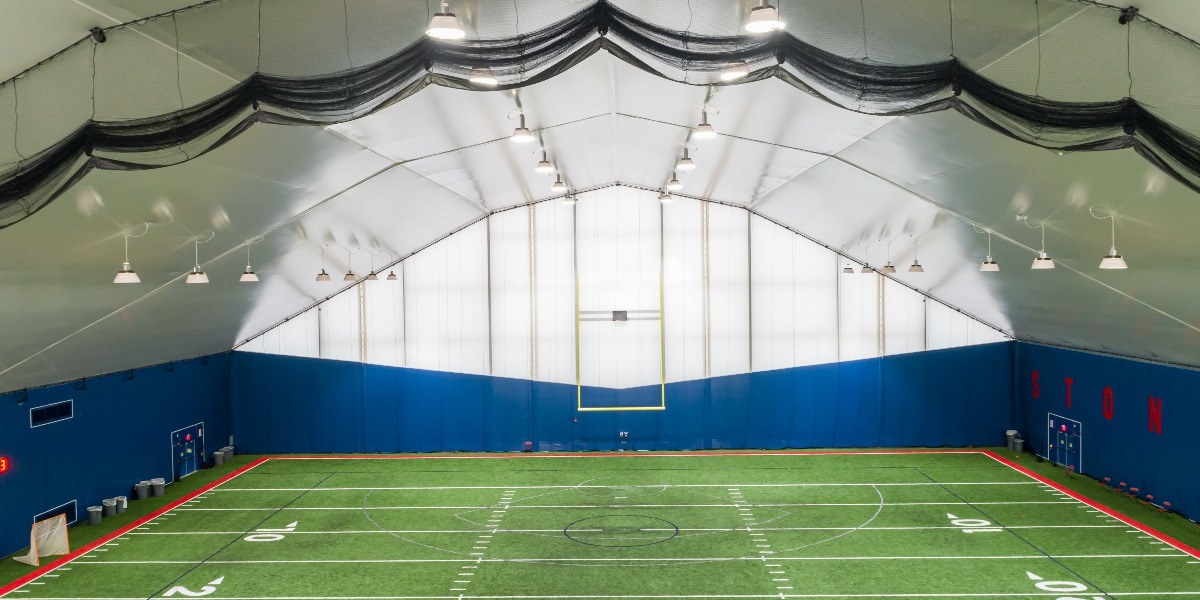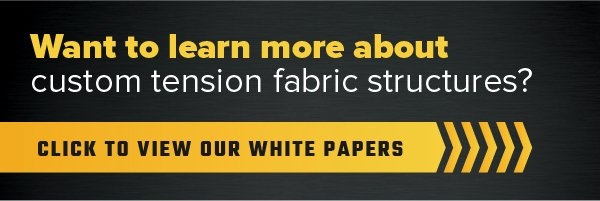Tension Fabric Building Cost: Factors Affecting Pricing

When considering a fabric building, one of the most common questions is, "How much does it cost?"
At Legacy, we specialize in fully customized buildings, so the answer isn't straightforward. The cost of a fabric building depends on various factors, each contributing to the unique nature of your project.
Size, Design, and Materials
There are three factors that vary from project to project and impact the final cost:
- Building size. How much space do you need? Larger buildings require more materials and labor, which impacts the overall cost.
- Building design. Do you need open walls, offset peaks, or an enclosed and insulated structure? The roof height and other design elements can significantly influence the price.
- Material choices. Our buildings feature ExxoTec™ fabric cladding, solid steel I-beams, and options for extra corrosion protection, such as epoxy coatings and precast walls. Each material choice can affect the final cost of your building.
Key Factors Influencing Cost
While comparison shopping for fabric buildings might seem appealing, the wide variability among them makes it difficult to draw definitive conclusions. Instead, focus on the specific features you need for your building. Some examples of features that impact the costs of a Legacy building include:
- Insulation Requirements: Insulating your building to meet local energy codes can add significant expenses, especially in extreme climates.
- Foundation Type: The choice of foundation, such as concrete or precast walls, impacts both the initial costs and long-term stability of the building.
- Door and Window Installations: The number, size, and type of doors and windows affect both material costs and installation complexity.
- HVAC Systems: Incorporating heating, ventilation, and air conditioning systems adds to the upfront investment and ongoing operational costs.
- Corrosion Protection: Options like our EpoxxiShield™ coating provide long-term benefits, but come with varying costs based on the level of protection needed. These coatings provide exceptional corrosion protection, essential for industries such as mining, bulk storage, and salt storage.
- Risk Category/Occupancy Class: Higher risk categories may necessitate additional structural reinforcements and compliance measures, increasing overall costs.
- Support for Equipment: Buildings designed to accommodate heavy equipment, conveyors, or cranes require robust structural components, influencing the price.
- Aesthetic Enhancements: Features such as wider eaves, custom color options, and architectural flourishes can add to the overall cost while enhancing visual appeal and functionality.
Life Cycle Savings
To evaluate your building's financial impact, consider analyzing life cycle costs. Life cycle cost analysis is “the selection of alternatives that impact both pending and future costs. It compares initial investment options and identifies the least cost alternatives for a twenty-year period.”
Factor several life cycle savings into your calculations. For example, our buildings come with warranties on the fabric, corrosion protection, and installation, helping them last for decades.
Additionally, these buildings are virtually maintenance-free. Legacy’s patented tensioning system helps our fabric exterior remain taut and secure throughout the building's life. Unlike other structures that require frequent re-tensioning, our system maintains its integrity without additional maintenance. This innovation reduces long-term costs and enhances the building's aesthetic and structural stability.
With warranties and minimal maintenance, you can quickly see the benefits of a Legacy building. While your building might cost more upfront, you’ll see a better return on investment (ROI).
Talk to an Expert Today
The complexity of custom fabric buildings requires professional guidance. Our industry experts can help you navigate options and features tailored to your needs, ensuring you make an informed investment. Contact us to discuss your project in detail and receive a quote.
Subscribe to our Blog
Recent Posts
- 5 Factors Every Project Owner Should Consider Before Approving Building Materials
- The 20-Year View: How Material Choices Impact Long-Term Operational Costs
- Climate Resilience in Commercial Construction: Why Traditional Methods May Not Be Enough
- Speed and Quality: The Role of Hybrid Building Materials
- Beyond the Bleachers: Designing Visually Striking Sports Facilities

